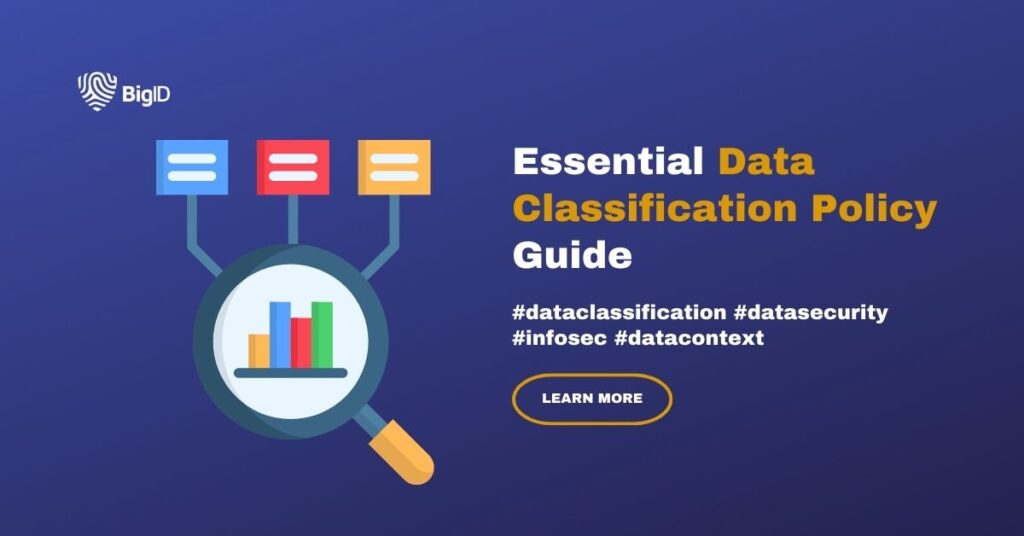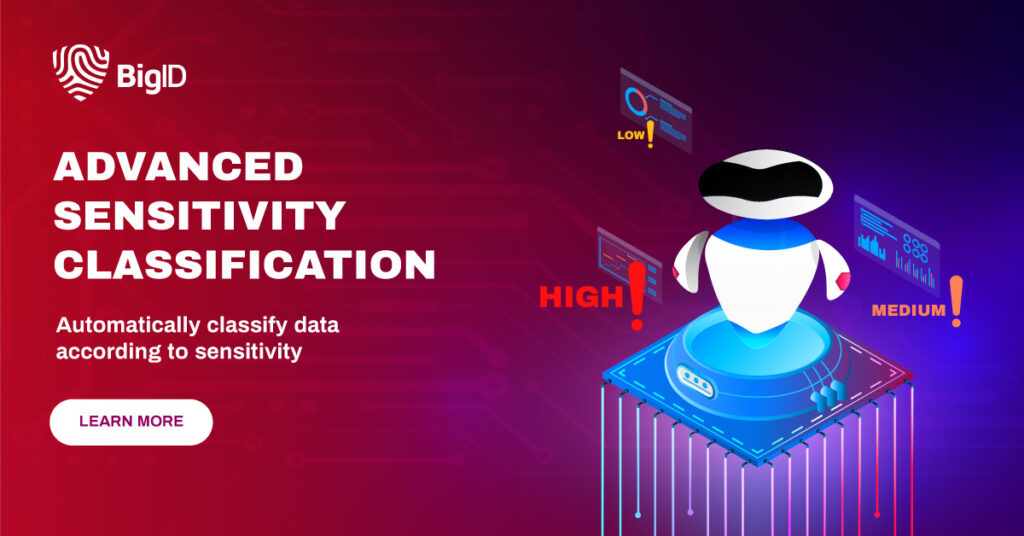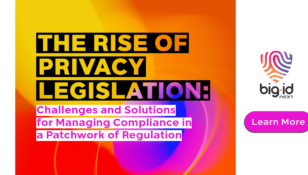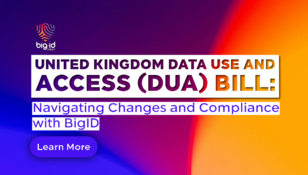Essential Data Classification Policy Guide

Building a Robust Data Classification Policy
What is Data Classification?
Data classification is the process of organizing data into categories based on its level of sensitivity, confidentiality, and criticality. This systematic approach helps organizations manage data more efficiently, ensuring that sensitive information is protected while facilitating accessibility to non-sensitive data.
Data Classification Levels
Data is typically classified into levels such as:
- Public: Information that can be freely shared without any risk.
- Internal: Information intended for use within the organization.
- Confidential: Sensitive information that should only be accessible to authorized personnel.
- Restricted: Highly sensitive information requiring the highest level of protection.
The Purpose of a Data Classification Policy
A data classification policy outlines the rules and procedures for classifying data. It ensures consistent data handling practices across the organization, enhances data security, and helps in compliance with legal and regulatory requirements.
Key Objectives
- Enhance Security: Protect sensitive data from unauthorized access and breaches.
- Facilitate Compliance: Adhere to regulations and standards like GDPR, HIPAA, and PCI-DSS.
- Improve Data Management: Streamline data handling processes and optimize data usage.

The Importance of a Data Classification Policy
Data classification policies are crucial for several reasons:
Protecting Sensitive Information
With a clear classification policy, organizations can better identify and protect sensitive data, reducing the risk of data breaches and unauthorized access. Data breaches and unauthorized access can have devastating consequences for organizations, including financial losses, reputational damage, and legal ramifications. A well-defined data classification policy helps organizations identify sensitive information and apply appropriate security measures to protect it.
By classifying data based on its sensitivity, organizations can:
- Apply Appropriate Security Controls: Different data types require varying levels of protection. For example, confidential data may need encryption and access controls, while public data may not need such stringent measures.
- Prevent Data Breaches: Identifying and securing sensitive data reduces the risk of data breaches. For instance, if an organization knows which files contain personally identifiable information (PII), it can prioritize their protection, reducing the likelihood of a breach.
- Ensure Proper Handling: Employees are more likely to handle data correctly when they understand its classification. For example, knowing that a document is “confidential” will prompt an employee to follow specific procedures, such as not sharing it over insecure channels.
Compliance with Regulations
Various laws and regulations require organizations to protect specific types of data. Non-compliance can result in hefty fines, legal action, and loss of customer trust. A data classification policy helps organizations meet these regulatory requirements by clearly defining how different types of data should be handled.
Key regulations include:
- General Data Protection Regulation (GDPR): GDPR mandates the protection of personal data of EU citizens, requiring organizations to implement robust security measures. A data classification policy helps identify personal data and ensures it is handled in compliance with GDPR.
- Health Insurance Portability and Accountability Act (HIPAA): HIPAA requires the protection of health information. A classification policy helps healthcare organizations identify protected health information (PHI) and apply necessary safeguards.
- Payment Card Industry Data Security Standard (PCI-DSS): PCI-DSS requires the protection of credit card information. A classification policy ensures that payment data is identified and secured appropriately, reducing the risk of fraud and data breaches.
Enhancing Operational Efficiency
A well-implemented data classification policy not only enhances security but also improves operational efficiency. By categorizing data and establishing handling procedures, organizations can streamline data management and optimize resource utilization. Benefits include:
- Efficient Data Access: Properly classified data is easier to locate and retrieve, saving time and effort. For example, employees can quickly find the documents they need by searching for files classified as “internal” or “confidential.”
- Improved Decision-Making: Clear data classification helps ensure that accurate and relevant data is used for decision-making. By knowing the sensitivity and importance of different data types, organizations can make informed decisions without compromising security.
- Resource Optimization: By understanding the classification of data, organizations can allocate resources more effectively. For example, more critical resources can be dedicated to protecting restricted data, while less critical resources can be allocated to public data.
- Consistent Data Handling: A data classification policy establishes standardized procedures for handling different types of data, ensuring consistency across the organization. This reduces errors and improves overall data management.
Best Practices for Implementing a Data Classification Policy
Establish Clear Objectives
Define what you aim to achieve with your data classification policy, such as improving data security, ensuring regulatory compliance, or enhancing data management.
Involve Stakeholders
Engage key stakeholders from various departments to ensure the policy addresses the needs of the entire organization.
Define Classification Levels
Create specific classification levels based on your organization’s requirements and the types of data you handle.
Implement Training Programs
Educate employees about the importance of data classification and how to correctly apply the policy.
Use Technology
Leverage data classification tools and software to automate the classification process, ensuring consistency and accuracy.
Regularly Review and Update the Policy
Continuously assess and update your data classification policy to adapt to new threats, regulations, and organizational changes.
Data Classification Policy Examples
Example 1: Financial Institution
A bank classifies its data into four levels:
- Public: Marketing materials and published financial reports.
- Internal: Internal memos and standard operating procedures.
- Confidential: Customer account information and transaction details.
- Restricted: Proprietary algorithms and client financial statements.
The bank uses encryption and access controls for confidential and restricted data, ensuring compliance with regulations like PCI-DSS and GDPR.
Example 2: Healthcare Provider
A healthcare provider classifies data as follows:
- Public: General health advice and promotional content.
- Internal: Internal communications and administrative documents.
- Confidential: Patient medical records and test results.
- Restricted: Research data and proprietary medical research.
The provider implements strict access controls, audits, and encryption to protect confidential and restricted data, adhering to HIPAA regulations.
Data Classification Use Case
Research indicates that organizations with robust data classification policies are better equipped to handle data breaches and comply with regulatory requirements. For example, a study by the Ponemon Institute found that companies with data classification policies in place had lower average costs for data breaches compared to those without such policies.
Use Case: Financial Services
A major financial services firm implemented a data classification policy, resulting in enhanced data security and compliance with international regulations. The firm saw a 30% reduction in data breaches and improved audit outcomes, demonstrating the policy’s effectiveness.
Data classification policies are essential for safeguarding sensitive information, ensuring regulatory compliance, and improving operational efficiency. By implementing best practices and continuously reviewing the policy, organizations can effectively manage their data and mitigate risks. With increasing data volumes and stringent regulations, a robust data classification policy is more critical than ever.
Implementing Efficient Data Classification Policies with BigID
BigID is the leading data privacy, security, and AI data management platform that helps organizations improve their data classification policy efforts in one simple and comprehensive place.
With BigID organizations get:
- Automated Discovery: BigID utilizes advanced data discovery techniques to automatically scan and discover sensitive data across various systems, applications, and data repositories. It identifies and classifies data based on predefined or customizable classification categories, such as personally identifiable information (PII), financial data, or intellectual property.
- Advanced Classification: Using machine learning and artificial intelligence algorithms, BigID applies intelligent classification techniques to accurately categorize data based on its content, context, and metadata. This enables organizations to achieve more accurate and consistent data classification results.
- Risk Assessment and Remediation: BigID’s Risk Scoring App and Data Remediation App offers risk assessment and remediation functionalities that help organizations identify high-risk data areas and prioritize their classification efforts. It assists in evaluating the impact of data breaches, assessing the effectiveness of security controls, and providing recommendations for remediation.
- Compliance Reporting: BigID’s Privacy Suite has a wide range of tools for generating comprehensive compliance reports and documentation, which can be used to demonstrate adherence to data classification policies, regulatory requirements, and industry standards. These reports help organizations in audits, regulatory assessments, and proving compliance to stakeholders.
To enhance your data classification efforts and streamline categorization of sensitive data— get a 1:1 demo with BigID today.













